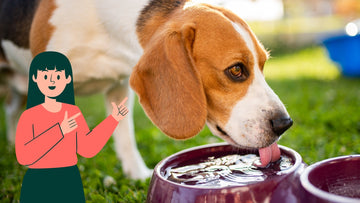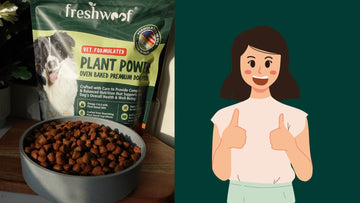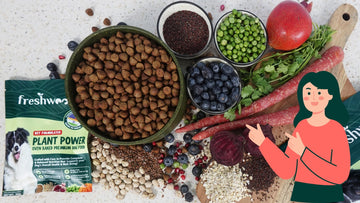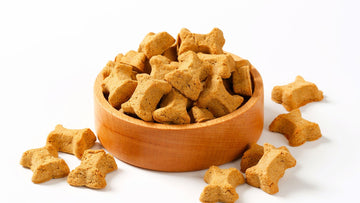When it comes to your dog's nutrition, water is even more important than protein, fat, carbohydrates, vitamins, and minerals but unfortunately it is often overlooked. Water is vital to your pet’s health and is the main component of healthy, living cells in the body. Without it, your pet’s body will not be able to function properly and even utilise other nutrients. Water is the most important nutrient! Water moisturizes the air in the lungs, transports oxygen and nutrients in the bloodstream to cells, helps regulate body temperature, protects and lubricates internal organs and joints, aids in digestion, helps eliminate waste from the body and supports nervous system function. You need to provide enough water for your dog daily. Your dog's body will naturally lose water all day. They lose water as they sweat through their paws and when they pant. And they lose water when they pee and poop.
Loosing just 10% to 15% of the water in the body could be life threatening for your dog. So, there is a requirement to compensate for this loss.
How much water a dog should drink?
A good rule of thumb: Most dogs should drink about 60 grams of water for every kilogram that they weigh, every day. That means a 9 kg dog needs at least 540 grams (approx) of water every day. That's more than half a kg. Really active, lactating dogs and dogs living in hot climatic conditions may need more and puppies generally drink more than adult dogs. Many things can affect how much your dog drinks, from weather to activity level to diet.
To help you keep track of how much water your dog drinks, make a note of how high you fill their water bowl and how far the level has dropped by the end of the day.
How Do You Know If Your Pet Is Getting Enough Water?
Other than tracking the amount of water your dog is drinking, you can watch for signs that your pet is hydrated or not. To test if your dog is hydrated, use your thumb and forefinger to pinch a little skin on their back or the top of their head. A well-hydrated dog has good skin elasticity, if you pull up on their skin, it flattens down immediately. But if your dog id dehydrated then the skin loses moisture, it will move back into place more slowly. In the most severe cases of dehydration, it does not spring back at all.
A dehydrated dog may be lethargic, their eyes may look sunken or dull, their saliva is sticky or rope-like, and their gums are darker and dry. Urine of a dehydrated dog with normal kidney function smells strong and can be dark yellow.
Is your dog drinking too much water than normal?
Drinking too much and peeing too much can be signs of an underlying medical condition in a dog. These conditions may include hormonal disorders such as diabetes, Cushing's syndrome, kidney disease, liver disease, cancer, fever and infection. Sometimes some drugs can also lead to excessive thirst in your dog, including anti-inflammatory drugs, heart failure drugs, and seizure medications.
A dry food diet can also lead to increased thirst in your dog. High sodium foods will also make your dog to drink more. Large amounts of salt can be dangerous to your dog, so avoid sharing highly salty "people" food with your dog. Signs your dog may have eaten too many sodium or salt include tremors, diarrhea, depression, and vomiting.
What you can do if your dog isn’t drinking enough water?
Dogs are hit-and-miss drinkers and won't drink enough, even if you provide them all the water they will ever need. Try these tips:
- Serve little bit of lukewarm water during winter and cold water during the summers, you can also treat your dog with ice-cubes or frozen treats during the summers.
- Wash bowls often, and make sure water is fresh and clean every day.
- Change the location of the water bowl. Try putting the water bowl near a pet's bed or resting location, or a place that doesn't have much foot traffic. Keep it away from washroom or toilet.
- Leave several bowls of water in different areas so that all animals can drink in peace.
- Flavor the water with a small amount of fluids your dog love (example: fruit juice or coconut milk).
- Feed your dog wet food instead of dry, add water to the dry or semi-moist food.





